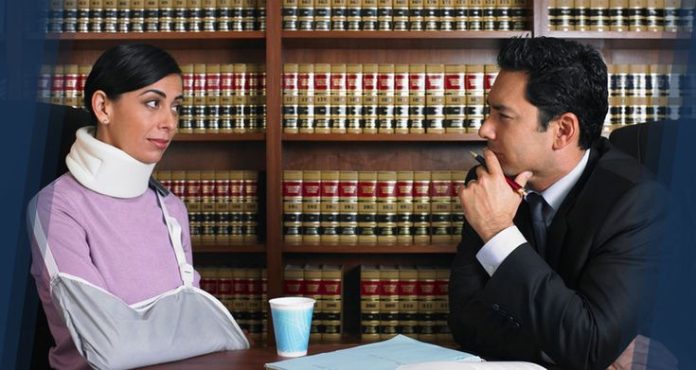We’ve all seen the futuristic courtroom scenes in movies: holographic witnesses, AI judges analyzing evidence, and lawyers wielding data tablets filled with irrefutable proof. While the legal system might not be quite there yet (although some courthouses are experimenting with virtual hearings!), technology is already playing a surprisingly big role in personal injury cases. From capturing the scene of the accident to presenting evidence in court, let’s explore how these advancements can assist you in managing your personal injury claim.
Capturing the Moment: Dash Cams, Drones, and Beyond
Imagine this: you’re involved in a car accident. The other driver is claiming it was your fault. Thankfully, you have a dash cam installed in your car. With a click, you can download the footage, which clearly shows the other driver running a red light. This is the power of technology in action.
Dash cams are becoming increasingly common, and for good reason. They provide a neutral, objective perspective of what happened on the road. Similarly, drone footage can be used to reconstruct accident scenes, especially in complex situations involving multiple vehicles or challenging terrain.
Even beyond dedicated recording devices, smartphones with high-quality cameras can be invaluable in capturing the aftermath of an accident. Take pictures of the scene, your injuries, and any damage to your vehicle. These visuals can serve as crucial evidence, especially if memories fade over time.
Remember: The sooner you can capture evidence after an accident, the better. This ensures details are fresh and there’s less chance of them being altered or forgotten.
The Power of Data: Wearables and Medical Records
Technology isn’t just about capturing what happens “out there” in the world. Wearable devices like fitness trackers and smartwatches can also play a role in personal injury cases. If you were wearing one when the accident occurred, the data it collected (such as heart rate, activity level, or even GPS location) could be relevant evidence.
For example, a fitness tracker showing a sudden drop in heart rate after a bike accident could support your claim of injuries. However, it’s important to consult with your lawyer about the specific data points and how they might be used in your case.
Medical records are another crucial piece of the puzzle. Electronic medical records (EMRs) allow for a more complete and accurate picture of your medical history, treatment plan, and prognosis. This information can be vital in demonstrating the extent of your injuries and the impact they’ve had on your life.
Tip: Request copies of all your medical records related to the accident. This will ensure your lawyer has a comprehensive understanding of your medical situation.
The Art of Communication: Text Messages, Social Media, and Email
In today’s digital world, communication often leaves a trail. Text messages, social media posts, and emails can all be sources of valuable evidence in a personal injury case.
For instance, text messages exchanged right after the accident could contain admissions of fault by the other party. Social media posts documenting your injuries or limitations can support your claims. Even seemingly innocuous emails about missed work due to the accident can be helpful.
However, there’s a flip side to this digital coin. Be mindful of what you post online after an accident, especially on social media. Anything you share could potentially be used against you by the other party’s insurance company.
Recommendation: Consult with your lawyer about managing your online presence after an accident. They can advise you on what to share (or not share) and how to protect your privacy.
Presenting the Case: Animations, 3D Reconstructions, and Virtual Reality
The courtroom of the future might involve holographic witnesses, but for now, technology is helping lawyers present their cases in a more compelling way. Animations and 3D reconstructions can be used to visually depict the accident scene, helping jurors understand the events that unfolded.
Imagine a complex car accident being brought to life through a 3D animation, complete with accurate vehicle models and the surrounding environment. This can be far more impactful than relying on static photographs or technical diagrams.
Virtual reality (VR) is another emerging technology that could be used in courtrooms. VR simulations can immerse jurors in the accident scene, giving them a firsthand perspective of what happened.
While VR is still in its early stages of legal use, it has the potential to revolutionize how evidence is presented.
Working with Experienced Lawyers: Why it Matters
When navigating a personal injury case, the expertise of your lawyer can greatly influence the outcome. Choosing an attorney with a solid track record and a deep understanding of the legal landscape is essential. Seasoned lawyers bring invaluable insights into how to effectively gather and present evidence, ensuring that your case is compelling and well-supported. They know how to interpret medical records, utilize evidence from various sources, and craft arguments that resonate with judges and juries alike. If you’re seeking dedicated legal representation, the team at Allen, Nelson & Wilson is composed of experienced attorneys who are committed to advocating for your rights and maximizing your claim.
Bottomline
In conclusion, technology has transformed the landscape of personal injury law. From capturing the scene of an accident to presenting evidence in court, these advancements can play a crucial role in helping you navigate your claim.
By understanding how to harness the power of technology, you can increase your chances of a successful outcome. Remember, while technology is a valuable tool, it’s essential to work with a skilled and experienced personal injury lawyer who can guide you through the legal process.








